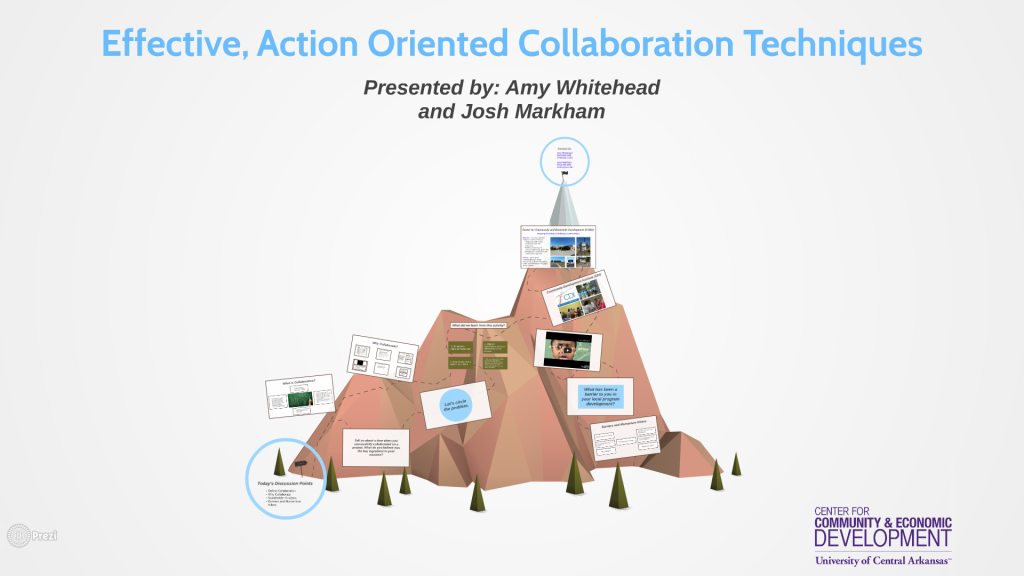CCED Director Amy Whitehead and Assistant Director Josh Markham presented at The Summit 2015 on April 30. At the 40th annual conference, Amy and Josh led a large group of non-profit, volunteer, and philanthropy leaders through their presentation “Effective, Action Oriented Collaboration Techniques.” The session focused on the critical collaborations and partnerships between non-profits and other organizations. The pair stressed to those in attendance that effective collaboration relies on setting an agenda that demonstrates a clear plan of action and motivates everyone involved to stay engaged. They outlined techniques for setting an action-oriented agenda when collaborating with others, and provided examples of important lessons learned from past collaborative efforts.
The highlighted discussion points included: the definition of collaboration, why collaboration is necessary, how to complete a stakeholder analysis, and a discussion of barriers and momentum killers.
Josh broke down collaboration to this simple definition: the process of a group of equals working together toward a common goal. He then went on to discuss that collaboration is necessary because “with limited resources, the need to work together becomes more urgent.” As we all know, none of us have unlimited resources, but if we partner with the right people, we can supplement what we don’t have through those partnerships. Josh also outlined that collaboration occurs best when trust exists between each party, all parties work together toward a common goal, everyone is working together on equal terms (AKA everyone completes what actions they are responsible for), and the relationship is mutually beneficial.
Amy encouraged participants think about a situation when they were attempting to bring a community together to push an initiative forward. After discussing different scenarios, she pointed out lessons learned concerning stakeholders:
1) It’s easy to leave someone out.
2) Different stakeholders will play different roles in the process.
3) Many people have a stake in your efforts.
4) Without getting the right people to your table, you might miss an opportunity to leverage resources, push away key players, duplicate efforts, or spend a lot of time educating key players on the back end of your project.
Barriers and momentum killers was the last topic to be covered. Participants shared personal barriers and momentum killers that made past and current projects bumpy. The majority of the discussion focused on the most common ones: commitment with no timeline, unclear expectations related to the mission of the project and/or the role of collaborators, an initiative that has no champion or the wrong champion, allowing perfection get in the way of something good, fear of moving forward without unanimous agreement, and all talk – no action.
With a little help and energy boost from Kid President, plus shameless plugs for the Community Development Institute and CCED, Amy and Josh’s presentation ended in a standing ovation (okay, maybe not a standing ovation, but there was an abundance of clapping). All in all, for a presentation that our team expected 10 people to attend (there were actually around 25 in attendance; yes, we did run out of hand outs), “Effective, Action Oriented Collaboration Techniques” was a huge success!
If you want to learn more about “Effective, Action Oriented Collaboration Techniques” or if you would like our team to speak at your event, please reach out to us.

